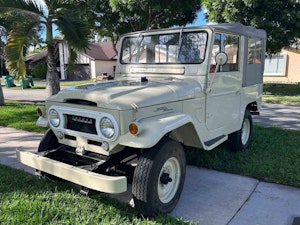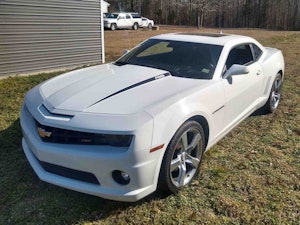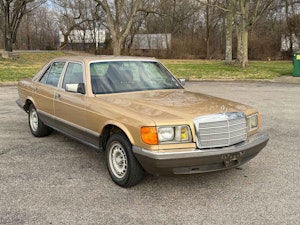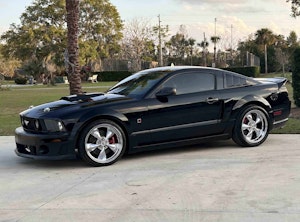Media | Articles
A 1000-mile shakedown in an old Porsche 911 I rebuilt myself
Of the 15 tools that came with a Porsche 911 when it was new in 1969, only two remained in mine: a lug wrench and an odd, curved blade with two studs at the end. I couldn’t even venture a guess as to the blade’s purpose, but as I departed on a maiden 1000-mile journey, I jammed both into the trunk. That would prove to be the one smart move in a series of rookie mistakes.
Someone with common sense would have realized that the car—and the pilot—weren’t ready. This was May 2017, at the tail end of a frenzied 13-month restoration of this Porsche 911E. The E denotes the fuel-injected model, and a series of delays meant the planned working-out-the-bugs local drives didn’t happen. The car had maybe a few dozen miles on it before I left my home in Ann Arbor, Michigan, to drive in an amateur Miata race at New Jersey Motorsports Park. A sensible person probably would have taken a different car. On the other hand, how often does modern life offer an adventure into the unknown?
The unknowns here were numerous. I’d never driven an old 911, let alone worked on one, before stumbling across the long-dormant machine in April 2016. The night before my family gathered for Easter in Flint, an hour and a half north, I fired up Craigslist in case there were any interesting cars to see along the way (we all do this, right?) and found an old Porsche. The owner’s divorce shook it from a three-decade slumber in a concrete-floor barn. It was remarkably pickled and original, the engine still plumbed with the mechanical fuel-injection system that was often replaced with simpler carbs. It wore a repaint in the original color that to my eye had just the right patina. In other words, not junky enough to embarrass or too perfect to worry about. For me, it was ideal.
Even though the new-car fever somewhat masked the flaws, when I dragged it into my garage, I saw my initial assessment wasn’t too far off. The 911 needed a full mechanical redo, an appealing hands-on challenge for a guy who rides a computer most days. There’s something soothing in the tactile swing of a wrench and a satisfaction in figuring out unfamiliar mechanics. Plus, of course, any excuse to invite friends over to help is always welcome. I was hooked.
Marketplace
Buy and sell classics with confidence

By September 2016, the car was stripped down to the shell. The major mechanicals—engine, gearbox, brake calipers, and suspension arms—were subcontracted out to experts. The vehicular Lego project ultimately took over nights after the kids went to bed. As the snow melted in April 2017, the 911 once again spit exhaust from its muffler, meaning there was plenty of time to add test miles to the odo before the late-May trip.
I sent the car to the local Porsche expert, the same one who had rebuilt the engine, for an alignment and a fine-tune of the fuel-injection system—an intimidating mashup of six butterfly valves and dozens of small linkages.
My mechanic, however, was sidelined with shoulder surgery, so instead of having weeks to test the car, I got it back a few days before departure. Decision time. I mentally placed odds on what was likely to strand me. Would the rubber grommets that join the brake-fluid reservoir to the master cylinder (and were a bear to seat) pop free? Did I properly tighten the bolts securing the half-shafts to the differential? Countless mechanical insurgents waited to pounce. What’s the worst that could happen? I have Hagerty roadside assistance, after all, and a long road trip would help me get to know the car.
You’d think after all the late nights and skinned knuckles, and a wallet reduced to smoldering ash, my first drive would be the most gratifying. But as I sailed through Ohio and Pennsylvania, every vibration or sound, real or imagined, brought a sense of dread. What is normal? I hadn’t a clue. To retain some sanity, I relied on the oil temperature and pressure gauges, the latter of which I had validated in the garage with a second gauge. If those two read okay, I ignored almost everything else.

In eastern Pennsylvania, I left the interstate to meet our photographer on the country roads north of Doylestown. Finally, the payoff. Strafing past spring fields and lush forests, bounding over lumpy pavement, the Porsche belied its age. Most cars of the era feel clumsy and overloaded compared to modern machinery. Not the 911. It weighs about 2000 pounds and rolls on skinny 14-inch tires, so you feel like you’re working it even when honoring country-road speed limits. There was also something I didn’t expect: a solidity to the body and powertrain that invites the driver to use the now below-average performance. It’s a unique and enthralling experience.
The next morning, just outside Philadelphia on a clogged suburban four-lane, the rear end suddenly shimmied and I heard a clunk. I immediately pulled over and tugged on the wheels. To my horror, the rears were loose.
But I had a lug wrench! Problem solved, and I made it to the track. The gearheads there were naturally interested in my vintage car, and I had a story to share. Over the course of showing the engine, I noticed the fan belt was loose. The 911’s engine is air cooled and relies on a huge fan to blow air over the finned cylinders. The fan also houses the alternator and is driven by a pulley on the engine crankshaft. That $15 belt is the most critical piece on the car.
The belt was part of a purchased tuneup package I had the engine builder install. Rubber belts will typically stretch after some use, but I didn’t see an obvious way to adjust the tension. I did, however, have an owner’s manual—a gift from my thoughtful wife—and to my relief it detailed how to adjust the tension. You set the diameter of the fan pulley by adding or removing shims between the two halves, just like it’s done on a VW Beetle. A special tool is required, an odd blade with two studs, and yes, that was the only other implement in my decimated tool kit.
I was feeling pretty lucky as I loosened the pulley until I realized it had already been set to its maximum diameter. There would be no tightening the belt, which danced wildly as the engine idled, eager to make an exit. I needed a shorter belt.
The first question they ask at most auto parts stores is “What year is your car?” Even if you know the chances are slim that your old foreign car will be in the database, you’re forced to follow along in the hope that they’ll let you behind the counter to pick through the inventory. You’re at the mercy of these folks, and your attitude will likely determine the outcome.
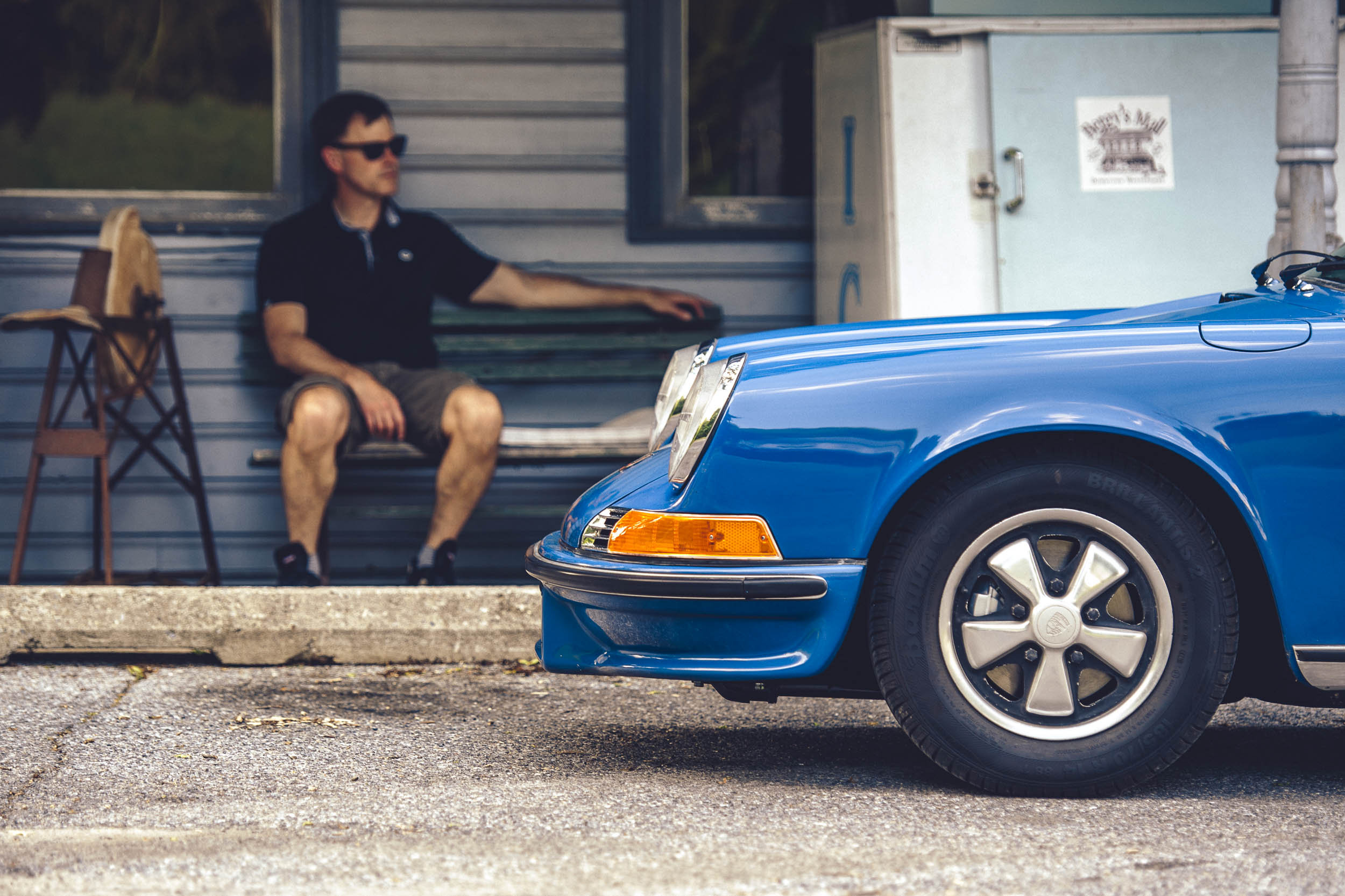
The store clerks were sympathetic to my plight and enthusiastic to help. I went to three stores, each time removing the belt from the car, each time going behind the counter and not finding a suitable replacement. At the third stop, an exasperated clerk said, “Your only hope is Tractor Supply.”
Departing for home on a Sunday, I heeded the advice, and dang, if he wasn’t right. The Tractor Supply belt was intended for a Lawn-Boy, not my, ahem, precision German machine, but after installing it in the parking lot—a now practiced task I completed in under two minutes—the mower belt didn’t flop around. Time to head west to Michigan.
A couple hours into Pennsylvania, dripping sweat during an unseasonable 85-degree day, I noticed the temperature gauge on the rise. Was this normal on a hot day? I pressed on with eyes glued to the dash until I heard a pop and coasted to the shoulder. My savior belt had shredded, probably because it was designed for a mower. I waited for the engine to cool, and a cop pulled up. I was tired of explaining myself but welcomed his light-bar protection from the cars flying past. As I installed the original belt, the chatty officer directed me to the closest auto parts store, which didn’t have a replacement. I bought the closest one it had and resigned myself to a stressful drive staring at the temp gauge. That stretched original belt, however, did the job, and I arrived home by bedtime.
Arguably, the rush to use the car had needlessly put me and the car in harm’s way. And wasted a lot of time. But there’s something to be gained from an experience like mine. It’s an opportunity to test yourself, to learn in the heat of struggle, to overcome, and it offers an excuse to admire the decency of strangers. Modern life tends to put us in protective bubbles, but old cars can punch us right out.
The article first appeared in Hagerty Drivers Club magazine. Click here to subscribe to our magazine and join the club.

